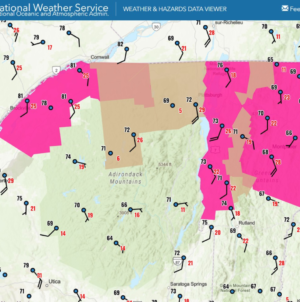-
Red Flag Warnings Issued in These States: What To Know - 23 mins ago
-
Sam Rivers, Bassist for Limp Bizkit, Dies at 48 - 25 mins ago
-
Healthcare workers strike at Kaiser Permanente ends after 5 days - 29 mins ago
-
Panthers’ Bryce Young Exits Game With Worrisome Ankle Injury - 60 mins ago
-
U.S. Kills 3 on Boat Suspected of Smuggling Drugs for Colombian Rebels - about 1 hour ago
-
College Football Program Fires Coach After 12-Point Loss - 2 hours ago
-
A Fragile Cease-fire Between Afghanistan and Pakistan Ends Violence, for Now - 2 hours ago
-
Dodgers’ Mookie Betts Sends Message to Brewers After NLCS - 2 hours ago
-
Epoch Times Reporter Resigns After Publication Signs Pentagon Rules - 3 hours ago
-
Florida Fires Billy Napier After Two-Point Win - 3 hours ago
College Students’ Rates of Depression and Anxiety Are Falling—Report
For the third year in a row, college students’ reports of depression, anxiety and suicidal thoughts are falling, according to a new report from the Healthy Minds Network.
The decline marks a consistent trend of improving mental health since 2022, researchers found.
Why It Matters
Anxiety and depression are common amongst college students, who face heightened pressure navigating young adulthood and academics at the same time.
In the report, 11 percent of college students indicated they’ve experienced suicidal ideation.

What To Know
Roughly 37 percent of college students reported moderate or severe depressive symptoms, while another 33 percent had moderate or severe anxiety symptoms, the survey found.
However, rates of severe depression dropped to 18 percent in 2025, compared to 23 percent in 2022. And reports of moderate-to-severe anxiety symptoms fell from 37 percent in 2022 to 32 percent in 2025.
The report, based on nearly 85,000 responses from 135 colleges, also found 25 percent of college students needed help for mental health problems in the last year.
“While overall access to mental health services seems to be similar to previous years, the good news is that students are accessing an increasingly diverse array of resources,” said Dr. Daniel Eisenberg, a co-principal investigator on the project and professor in the UCLA Fielding School of Public Health’s Department of Health Policy and Management in a statement.
“Digital and mobile services are evolving rapidly and are now popular among students. An important challenge in the coming years will be to help students make sense of their many options and help them access something that will be a good fit for their needs and preferences.”
While decreasing, more than half of surveyed students still reported loneliness. However, among students showing depression or anxiety symptoms, 60 percent received clinical mental health treatment, the report found.
“I think there has been a significant decrease in the prevalence of depression and anxiety among college students for many reasons,” Alexandra Cromer, licensed therapist with Thriveworks, told Newsweek.
“Primarily, most college campuses either have their own counseling or mental health centers or provide students access to these services at free or reduced cost. Further, there have been continued changes in society that promote going to therapy and receiving help for any mental health struggles that you might experience.”
What People Are Saying
Dr. Justin Heinze, associate professor of health behavior and health equity at U-M’s School of Public Health and a co-principal investigator of the study, said in a statement: “These sustained reductions tell me this is not a blip. Whether it’s distance from the pandemic, better institutional support or something else driving the change, I think this is a promising counternarrative to what seems like constant headlines around young people’s struggles with mental health.”
Dr. Sasha Zhou, assistant professor in the Department of Public Health at Wayne State and a co-principal investigator, said in a statement: “These disparities have been persistent in the last decade and underscore that there’s more work to be done to close the gap in mental health support. Emerging research suggests that affinity-based peer support programs, curriculum-integrated psychoeducation and adaptations of social/emotional learning approaches show promise in supporting the mental health of underrepresented or overlooked students.”
Amanda Smith of DetoxRehabs.net, told Newsweek: “Colleges have increased resources, and this generation, with high mental health literacy, is actively using them (38 percent received therapy). Culturally, this normalizes help-seeking, moving from crisis response to better management. The long-term implication is a more resilient, mentally literate workforce, but the high underlying prevalence (37 percent with moderate/severe depression) means sustained institutional investment is crucial.“
What Happens Next
As mental health therapy has started to carry less of a stigma, fewer students may continue to report symptoms of anxiety and depression, experts say.
“This coupled with Internet access and the ability to obtain resources at a higher rate than ever via online services, make therapeutic services more accessible as well as other mental health resources that support the decrease in depression and anxiety,” Cromer said. “Therapeutic services more accessible as well as other mental health resources that support the decrease in depression and anxiety.”
Source link




















